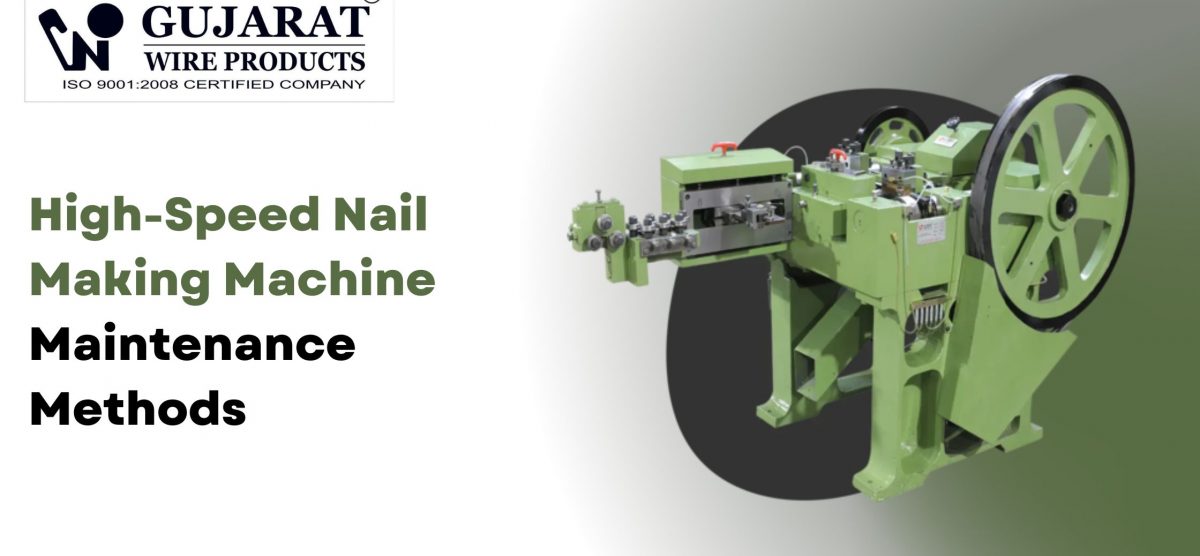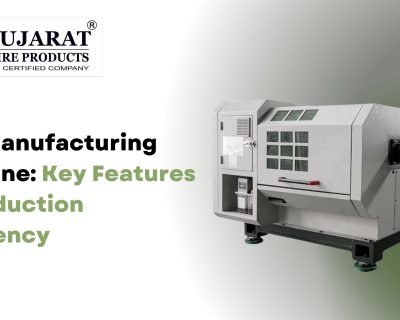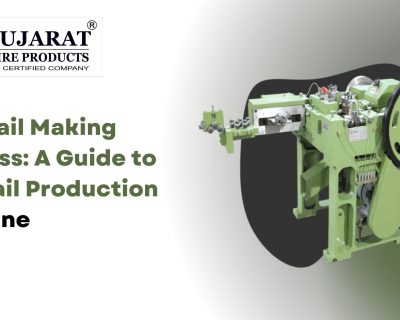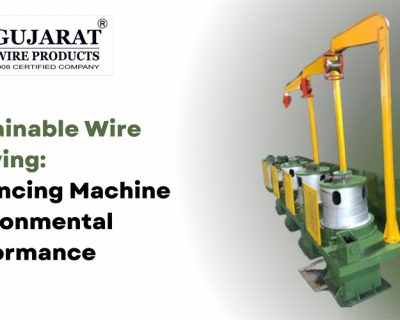Blog

High-Speed Nail Making Machine Maintenance Methods
High-speed nail making machines are the backbone of efficient nail manufacturing, transforming wire into finished nails rapidly and reliably. With the growing demand for premium quality nails in construction, furniture, and export industries, ensuring your equipment runs optimally is not just a recommendation—it’s a necessity. Proper maintenance guarantees product consistency, extends the life of your machinery, reduces downtime, and maximizes profits. Gujarat Wire Products brings you this in-depth guide on maintaining high-speed nail making machines for peak performance every day.
Understanding the High-Speed Nail Making Process
Every small nail begins as round wire and is shaped through a series of high-precision steps: straightening, stamping, wire feeding, clamping, shearing, and cap and point forming. Each movement—powered by the coordinated action of eccentric shafts, cams, connecting rods, and punches—must operate flawlessly to ensure output quality and machine longevity.
Key machine components include:
- Main shaft (eccentric shaft): Drives the punching action for head formation.
- Auxiliary shaft: Powers the cutting operation for accurate nail length.
- Clamping system: Secures wire during formation cycles.
- Cutters and dies: Define shank, head, and point precision.
Malfunctions or gradual wear in any of these elements directly impacts nail quality, production speed, and maintenance costs.
Daily Maintenance Essentials for Seamless Operation
1. Avoid Adjustments During Operation
To maintain safety and machine precision, all adjustments and repairs must only be performed when the equipment is completely powered off and stationary. Adjusting moving parts risks misalignment, abnormal wear, or even severe injury.
2. Routine Cleaning and Inspection
- Clean nail molds and dies regularly: Remove debris, fine metal shavings, and residual lubricants.
- Inspect wires: Never use rusty or dirty wires—these damage dies quickly and compromise product surface finish.
- Wipe down external surfaces: Prevents dust infiltration and maintains a safe, hygienic workspace.
3. Nail Knife and Die Care
Sharp, undamaged knives are essential for precise, burr-free cuts. Dull blades cause excessive wear on the machine, produce rough-cut nails, and decrease output rate. Regularly sharpen or replace knives and dies using manufacturer-recommended specifications.
4. Monitor Temperature and Listen for Abnormalities
Check for unusual heat buildup in friction points—such as bearings, guides, and cams—throughout operations. Listen for abnormal noises, which can indicate developing mechanical problems or lubrication issues.
5. Electrical Safety First
When performing maintenance or repairs:
- Always switch off the main power supply.
- Use only original spare parts for replacements to ensure safety, performance, and warranty compliance.
6. Lubrication is Non-Negotiable
Adequate lubrication significantly extends the lifespan of moving parts and reduces the risk of seizing or overheating. Follow the machine’s lubrication schedule:
- Use high-grade, manufacturer-recommended lubricants for bearings, gears, and guides.
- During the initial run-in period of new machines, increase frequency of checks and oil top-ups.
7. Regular Tightening and Alignment
Vibration from high-speed operation can gradually loosen fasteners and mountings. Weekly, check and tighten bolts, nuts, shafts, and set screws. Misalignment not only causes hammering and vibration but reduces accuracy and accelerates tool wear.
8. Inspect the Power Supply System
Check that:
- Power cables and connectors show no sign of wear, cracking, or looseness.
- All safety switches—such as emergency stops—function perfectly.
9. Cooling and Cleaning Systems
If your machine features a cooling system, inspect for blockages or leaks. Clean or replace filters regularly to maintain effective temperature control and prevent dust accumulation near critical components.
Scheduled and Preventive Maintenance Checklist
| Task | Frequency | Purpose |
| Clean molds, dies, and working area | Daily | Ensures product quality, prevents buildup |
| Lubricate mechanical components | Daily/Weekly | Minimizes friction and heat |
| Inspect wires for rust/debris | Per batch | Reduces die/tool wear |
| Sharpen/replace nails knives and dies | Weekly/As needed | Maintains cut quality, extends die life |
| Tighten all fasteners | Weekly | Prevents vibration/misalignment |
| Check electrical connections & switches | Weekly | Ensures safety/reliability |
| Inspect cooling systems and filters | Weekly/Monthly | Prevents overheating |
| Full machine inspection | Monthly | Early detection of wear/failure |
| Replace worn parts (original only) | As needed | Preserves performance & warranty |
Advanced Best Practices for High-Speed Nail Making Machines
Use Only High-Quality Inputs
- High-tensile, rust-free wires protect dies and maintain machine speed.
- Original spare parts guarantee long-term compatibility and efficiency.
Operator Skill Development
Trained operators detect early signs of wear, abnormal operation, or process drift faster—reducing the risk of unplanned stoppages.
Keep Spare Parts on Hand
Store new, original-spec knives, dies, and key wear parts. Rapid replacement reduces downtime and extends mean time between failures.
Monitor Production Consistency
Log output rate, nail quality, and scrap percentage. Sudden dips signal maintenance or tooling issues that require attention.
Embrace Preventive, Not Reactive, Maintenance
Schedule downtime for systematic inspection and service—instead of waiting for breakages—which lowers long-term maintenance costs and downtime.
Troubleshooting Common High-Speed Nail Machine Issues
| Problem | Likely Cause | Solution |
| Nails have burrs/rough edges | Dull knives, dirty dies | Sharpen/replace blades, clean dies |
| Irregular nail lengths | Worn or misaligned cutter system | Re-align or replace cutters |
| Excess machine vibration/noise | Loose fasteners, poor lubrication | Tighten, lubricate, check alignments |
| Low production speed | Dirty molds, dull blades, worn rollers | Clean/replace parts, service rollers |
| Overheating of machine components | Lubrication failure, blocked cooling | Top up/change oil, clean cooling system |
| Electrical tripping or failure | Faulty wiring, overloaded circuits | Repair wiring, check load, ensure proper circuit protection |
Why Choose Gujarat Wire Products for Nail Machine Support?
- Decades of Experience: In-depth understanding of industrial nail production challenges in India and abroad.
- Comprehensive Spare Supply: Fast delivery of original-knives, dies, and other essential spares.
- Expert Technical Guidance: Training, troubleshooting, and maintenance planning tailored to your plant.
- Commitment to Quality: Machines built for sustained, high-quality output—low downtime, high yield.
Frequently Asked Questions
Q: How often do I need to change nail knives and dies?
A: Frequency depends on production volume and wire type. Regularly inspect for dull edges or chipping—replace at the first sign of degradation to avoid poor product finish.
Q: Can I use generic replacement parts to save costs?
A: It’s strongly discouraged. Non-original parts often have lower tolerances and material quality, risking machine damage and poorer nail quality.
Q: What safety steps should operators follow?
A: Never adjust or clean while running, always power off before maintenance, and use the three-phase rocker controls as specified in your operation manual.
Q: Why is wire quality so important?
A: Rusty or inconsistent wire accelerates die/tool wear and causes product defects, leading to increased costs and downtime.
Conclusion: Consistency and Longevity Through Disciplined Maintenance
By integrating these rigorous maintenance practices into your daily schedule, your high-speed nail making machines from Gujarat Wire Products will deliver maximum output, minimal downtime, and flawless product quality. Proactive care, skilled operation, and the right inputs ensure your business remains competitive, reliable, and profitable for years to come.
Optimize your nail manufacturing process with Gujarat Wire Products—setting industry standards for quality, durability, and customer support.




